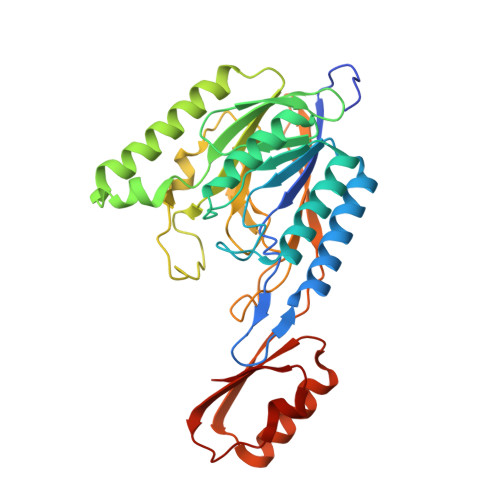Fragment- and structure-based drug discovery for developing therapeutic agents targeting the DNA Damage Response.
Wilson 3rd, D.M., Deacon, A.M., Duncton, M.A.J., Pellicena, P., Georgiadis, M.M., Yeh, A.P., Arvai, A.S., Moiani, D., Tainer, J.A., Das, D.(2021) Prog Biophys Mol Biol 163: 130-142
- PubMed: 33115610
- DOI: https://doi.org/10.1016/j.pbiomolbio.2020.10.005
- Primary Citation of Related Structures:
6X1Y, 6X1Z - PubMed Abstract:
Cancer will directly affect the lives of over one-third of the population. The DNA Damage Response (DDR) is an intricate system involving damage recognition, cell cycle regulation, DNA repair, and ultimately cell fate determination, playing a central role in cancer etiology and therapy. Two primary therapeutic approaches involving DDR targeting include: combinatorial treatments employing anticancer genotoxic agents; and synthetic lethality, exploiting a sporadic DDR defect as a mechanism for cancer-specific therapy. Whereas, many DDR proteins have proven "undruggable", Fragment- and Structure-Based Drug Discovery (FBDD, SBDD) have advanced therapeutic agent identification and development. FBDD has led to 4 (with ∼50 more drugs under preclinical and clinical development), while SBDD is estimated to have contributed to the development of >200, FDA-approved medicines. Protein X-ray crystallography-based fragment library screening, especially for elusive or "undruggable" targets, allows for simultaneous generation of hits plus details of protein-ligand interactions and binding sites (orthosteric or allosteric) that inform chemical tractability, downstream biology, and intellectual property. Using a novel high-throughput crystallography-based fragment library screening platform, we screened five diverse proteins, yielding hit rates of ∼2-8% and crystal structures from ∼1.8 to 3.2 Å. We consider current FBDD/SBDD methods and some exemplary results of efforts to design inhibitors against the DDR nucleases meiotic recombination 11 (MRE11, a.k.a., MRE11A), apurinic/apyrimidinic endonuclease 1 (APE1, a.k.a., APEX1), and flap endonuclease 1 (FEN1).
- Hasselt University, Biomedical Research Institute, Diepenbeek, Belgium; Boost Scientific, Heusden-Zolder, Belgium; XPose Therapeutics Inc., San Carlos, CA, USA.
Organizational Affiliation:


















